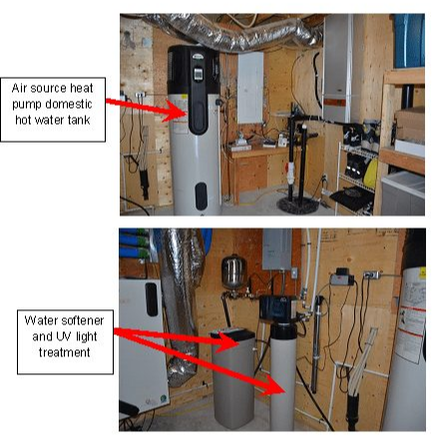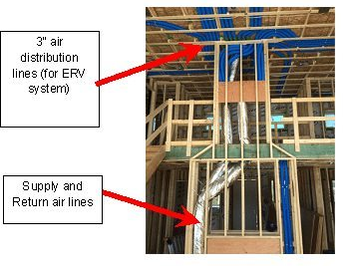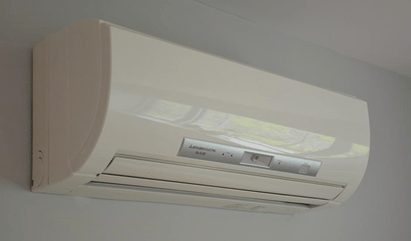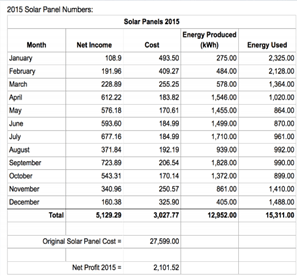|
On Wednesday, May 22nd, The Conscious Builder attended the annual Building Innovation Trade Show hosted by the Greater Ottawa Home Builders Association. This year had 30 plus vendors and 4 speakers. The event is offered to members as well as invited guests and provides a great resources for education and development in the industry. This year’s theme was about Climate Change and its impact on the building industry. Presenters included Tim Short from Enbridge Gas who talked about an exciting pilot program involving combination heating systems for residential construction involving electric and gas, Gary Martin from the Sprott School of Business discussed the sense of urgency and the need to adapt and change conventional practices, Dan Sandink who explained how the Insurance Industry needs to catch up to current climate trends including data collection efforts and Cory MacCambridge from the Engineered Wood Association talked about better framing products to provide higher wind resistance. To learn more about the Greater Ottawa Home Builders Association visit their website at gohba.ca. By Paul Cairns from Buildings for a Better Future If a bright, spacious, modern, and beautiful mansion that’s also energy efficient and has a low carbon footprint sounds like a contradiction to you, I suggest you continue reading. The Conscious Builder’s new Red Castle Passive House is proof that this is possible. Buildings for a Better Future had the pleasure of visiting the Passive Red Castle Project located just outside Manotick on a lovely Saturday afternoon. Casey Grey, the founder and CEO of The Conscious Builder Inc. gave us a tour of his new and beautiful home that’s also a highly energy efficient marvel. The best part is, the design looks simple and elegant! Who said that green had to be complicated? The open house event truly demonstrated what a Passive House can be, helped educate consumers about the 5 most important factors when designing a Passive House, and discussed lessons learned from building Passive Houses. A very pleasant presentation summarized how the house performed in 2015 and the personal tours from Casey Grey himself allowed visitors some great one on one interaction. The Passive House standard results in homes that consume 80%-90% less energy are more comfortable and have healthier indoor air quality. The Red Castle demonstrates the Conscious Builder’s ability to provide customers with a well-insulated home that is air-tight, and pays close attention to passive solar design features. Some of the Red Castle Passive House’s offerings include:
Not sure what any of the technical stuff means? Don’t worry; we will go inside in a moment and explain, but for now, remember that The Conscious Builder can offer you a healthy, comfortable, environmentally friendly, and beautiful home with their builder experience, and passion for conscious living. Now, let’s have a look! Exterior The first look at this home inspired two thoughts in my mind. The first: I didn’t know that you could make energy efficient homes so huge! The second: this home is beautiful; I can’t even tell that there’s anything different about it. Even the solar panels on the south side facing the back of the lot seem to blend nicely and are very appealing to the eye. I also noticed how the design of the awnings and roof leave all windows and doors completely in the shade, a clever Passive House technique that reduces the need for cooling in summer. Main Floor Walking through the front door and stepping into the home was a welcoming, beautiful bright, and spacious open concept interior that features an award winning kitchen, a beautiful double sided bio-ethanol fireplace with amazing stone work, a bright and cheery living room oriented due south to maximize heat gain in the winter, LED pot lights/fixtures, EnergyStar® rated appliances and most importantly, a homey feel. The house felt quite comfortable and was very bright. The “Attitude of Gratitude” jar on the wall reminded me how grateful I was to have a sneak peek at the home of the future. It also made me grateful to see that my current lifestyle will not have to significantly change in order to reduce my environmental footprint. I was grateful to be overcome with the realization that being environmentally friendly doesn’t have to affect my life that much. This home looked like any other, but it wasn’t. That became especially apparent from Casey’s presentation and the mechanical room downstairs. Power Point Presentation Casey took us through a quick 15 minute presentation to discuss how this building differed from the rest and gave us a look “behind the walls”. He started by defining what a Passive House is. A Passive House is a home that:
He then discussed the 5 most important factors for making a home energy efficient and comfortable. They are:
The presentation was extremely educating and full of very valuable information. He discussed many of these details about how this home fulfills these factors which I will try to discuss below, but if you feel that you would like more information you can always via his contact information at the end of his document. Following the presentation we got a tour of the mechanical room and got to see some photos of the mechanical systems. Mechanical System
Building Envelope For those not interested in the “building science stuff” you can skip this part, but for the hard cores out there, this is the bread and butter of the Passive House standard. The thing that makes it what it is. So let’s jump in:
Building Performance So what does this all mean to the bottom line on your net energy consumption, and of course your energy bill? Well in 2015 the Red Castle Passive House used 15,311 kWh and produced (via its solar panels) 12,952 kWh. This is a net energy use of 2,359 kWh. Compared to the average Ontario home-owner use of 29,444 kWh in 2007[2] that’s only 8% of the average homeowner!
How about finances? Well, the solar panels provided $5,129.29 of income, while the electricity cost was only $3,027.77 (this house is part of the MicroFIT Program, not off-grid), which results in an overall electricity cost of -$2,101.52. That’s right; they got PAID to live there. With an original solar panel cost of $27,599.00, the payback period (assuming cash flow doesn’t change, and a 3% interest loan with a 25 year amortization, i.e. you refinanced your mortgage) would be just under 5 years with a 23.25% return on investment[3] based on the total amount earned (i.e. $5,129.29). When you factor in the cost of electricity to power your home the payback period increased to 11 years with a 8.58% return on investment[4] (i.e. annual net profit of $2,101.52). Furthermore, the MicroFIT contract is for 20 years. So either way you earn 9 years of pure profit. That’s better than throwing your money into the markets and hoping you don’t lose your shirt! Even better, the more energy conscious you behave (i.e. the less you consume) the greater your payback. Details are in the spreadsheet provided to use below: Note: the costs for the Passive Home construction vs. regular Ontario Building Code construction have not been factored in. Spray polyurethane foams (SPF) are gaining popularity in the construction industry and are a valuable product for insulating or sealing gaps and cracks in the building envelope. There are two main systems for the application of SPF: the one component system and the two component system. This article will attempt to explain the uses and chemistry behind each, as well as health implications of SPF use. The One Component System The one-component system contains all reactants in a pressurized can. This system is used mainly for air-sealing small gaps, cracks and holes in the building envelope, such as those around windows and doors, service penetrations, and small cavities that are too difficult to insulate otherwise. The Two Component System In the two-component system, reactants are kept in separate containers and mixed at the nozzle of a spray gun to begin the polymerization and blowing reactions. One container contains the isocyanates (A side), and the other contains the polyols and various additives (B side). Some manufacturers replace a small portion of the petroleum-derived chemicals in the B side with soy-derived chemicals to increase the renewability of their product. The two-component system is used to apply SPF on a large scale, such as insulating between trusses or studs in a wall. Two types of SPF, closed-cell and open-cell, may be used as insulation and each as its own benefits. Types of Spray Foam Closed-cell SPF has a medium density, high strength, and high rigidity. It acts as a vapor barrier when applied thicknesses of over 2” in climates up to 10.000 Heating Degree Days (HDD) and when interior relative humidities are up to 50% (Straube, 2009). It is an effective air barrier and has an R-value of over 6 per inch (American Chemistry Council, 2016). Open-cell SPF has a low density, low strength, and low rigidity (American Chemistry Council, 2016) and has been shown to act as a vapor barrier in climates with less than 4,500 HDD when applied at full wall thickness (5.5”) (Straube, 2009), and an air barrier when applied at the same thickness. It has an R-value of about 3.5 per inch (American Chemistry Council, 2016). When to Insulate With Spray Foam Since spray foam is not the best for the environment or the people installing it, we like to avoid using spray foam whenever possible. Although, there are some areas where spray foam is the ideal option, especially in renovations. Renovations often limit the ability to change the way a structure is put together so there is no opportunity to change where the insulation, air barrier and/or vapour barrier can be installed. Because of this, spray foam offers us the ability to install a material that has a high R-value as well as the ability to create a great air barrier and vapour barrier. In new construction, with proper planning and details, we can eliminate the need for expensive spray foam. In addition, the framing in new homes has a tendency to shrink, warp, and expand as it adjusts to the humidity levels of the home. During this process, sprayed foam may separate from framing members, detracting from its ability to act as an air or vapor barrier if this was its intended function. Spray Foam Chemistry The main ingredients in SPF are isocyanate compounds (most commonly 4,4’-diphenylmethanediisocyanate and its isomers) and a polyol (Environmental Protection Agency, 2016). Additives such as flame retardants, catalysts, and blowing agents serve several functions (Environmental Protection Agency, 2016). Flame retardants reduce the flammability of the hardened polyurethane foam to meet building codes. Catalysts increase the rate of the polymerization reaction. The reaction between the isocyanates and the polyols generates heat, and this heat enables the blowing agents to expand and ‘bubble’, within the hardening polyurethane, creating the cells within the foam (Straube, 2009). What does this reaction look like? The polyurethane foam is created when the cyanate group of an isocyanate molecule reacts with the hydroxyl group of a polyol, forming a urethane linkage between two isocyanate molecules (The University of York, 2013). Spray Foam Health & Safety Is spray foam safe to use? Cured SPF is safe but SPF as it is being applied is not. Curing process takes about 24 hours to occur after installation (CBC, 2013). During the spraying process, the aerosolized isocyanates released from the spray gun are irritants to the mucous membranes, eyes, gastrointestinal tract and respiratory tract (National Institute for Occupational Safety and Health, 2013). Exposure to aerosolized isocyanates may lead to severe asthma attacks and sensitization to further exposure (National Institute for Occupational Safety and Health, 2013), (World Health Organization, 2000). The use of adequate ventilation and PPEs during installation are critical to health and safety for workers. Tips for Selecting a Spray Foam Professional It is important to hire only certified installers, such as those certified by the Canadian Urethane Foam Contractors Association (CUFCA). Improperly installed or oversprayed SPF may not cure properly and can off-gas harmful chemicals and odors. It may also crack, break, or shrink, incorrectly installed, reducing its efficacy.
Are you thinking of renovating or building?
Are you wondering how much it’s going to cost you? Do you like being involved in the process? Are you managing the project yourself? If you’ve answered yes to any of the questions above, I have something for you! Throughout my career in construction (custom homes & renovations), I’ve come to realize that most homeowners and building owners like to be involved as much as possible in the process. They often do a lot of their own research and have many questions (which is great) and as you may have guessed, a lot of them revolve around costs and processes. Unfortunately, what often happens is that people end up being disappointed because they eventually realize that their Dream Home or Ideal Build is not within their Budget. I’m usually the bearer of bad news on this front… The cause is really just because most people don’t know how much is really involved in their project. It’s not their fault, they just don’t know. Well, I’ve created something to help with this. What I’ve created is a complete estimating spreadsheet for your residential project. Whether you’re renovating or building brand new, this will work for you. It has everything you need to think about when planning your project. From the planning stages right through to the final clean up. This estimating spreadsheet will do the following for you:
This spreadsheet is completely FREE. Simply fill out the form below to access it. You can also watch this short video on how to use it. |
Archives
March 2024
Categories
All
|
|
CONTACT US
|
Copyright © 2020 The Conscious Builder Inc. All Rights Reserved.








